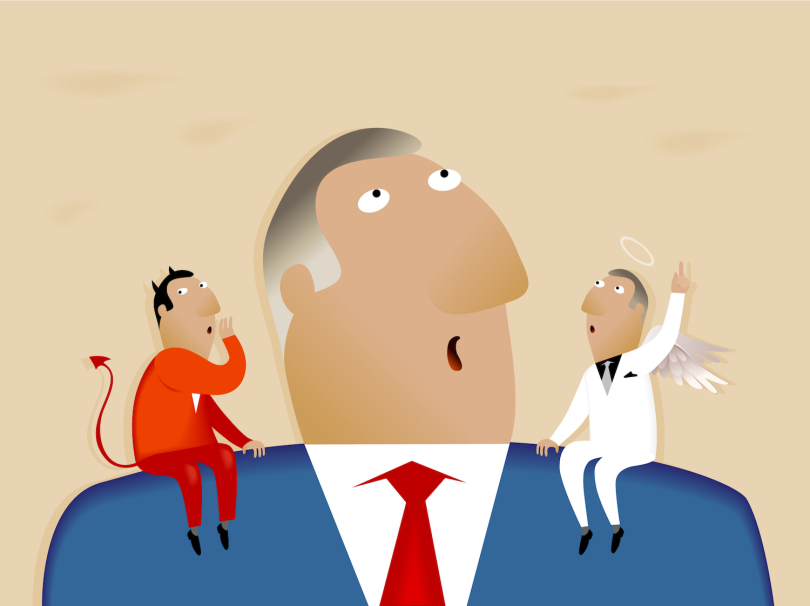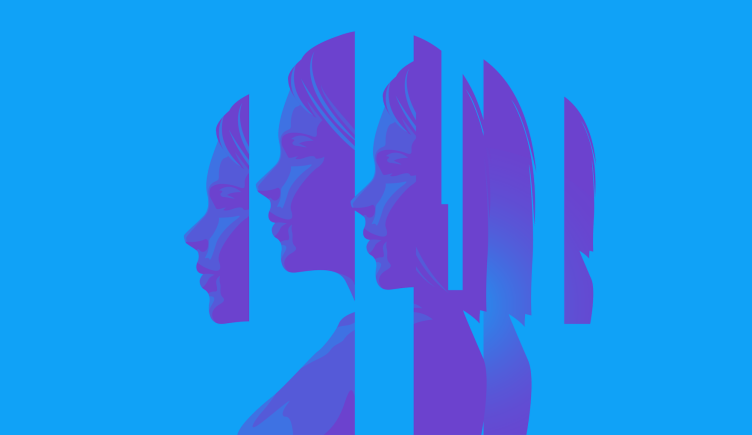Tobias Komischke thinks a lot about the urinal fly.
In the early 1990s at Amsterdam’s Schiphol Airport, so the story goes, the manager Aad Kieboom introduced small, lifelike etchings of flies above the urinal drains in the airport’s bathrooms to give people a more obvious target.
The guerrilla sanitation plan worked. According to the Washington Post, the urinal fly led to an “80 percent reduction in urinal spillage” and “an 8 percent reduction in total bathroom cleaning costs.”
The small cue, said Komischke, a UX Fellow at the tech company Infragistics, is an example of nudging: giving “people a chance to do the right thing, whatever you define as right, with zero cost, so they make a good choice.”
Nudging, he told me, is just one of the many ways behavioral design can influence human choices. It is the sort of approach LinkedIn applied in creating a progress bar on its profile page, which led to a 55 percent increase in completion rates.
What Is Behavioral Design?
No one forces you to complete your profile page, Komischke explained, but the mere act of showing you an incomplete progress bar “triggers a need to say: ‘I really want to be at 100. Or I want to get closer to 100.’”
From simplifying web navigation to encouraging physical activity, job safety, or medication adherence, the use cases for behavioral design are myriad. As an increasing number of software companies and organizations employ behavioral design — from Fitbit and DuoLingo to the University of Michigan — attention has turned to its efficacy and ethical implications.
With roots in a wide-ranging and occasionally conflicting pool of research, behavioral design defies easy generalization. One notable influence is the self-determination theory of University of Rochester psychologists Richard Ryan and Edward Deci in the late ’70s, which holds that intrinsic motivation can be more transformative than extrinsic motivation. Nobel Prize winning behavioral economist Daniel Kahneman’s research into the decision-making mechanisms in the brain is another.
The origin of its influence in software circles, however, can be traced largely to BJ Fogg, who founded the Stanford Persuasive Technology Lab and gave the framework an elegantly simple heuristic that can be mapped along an asymptotic curve.
The formula looks like this:
Behavior = Motivation * Ability * Trigger.
Stephen Walker, senior director of product at Productboard, who previously led global experience design at Amazon, said the three variables on the right-hand side of the equation serve different functions but are each tremendously important to UX design.
“It’s little wonder early Facebook employees went to [Fogg’s] class at Stanford and created one of the most addictive products we’ve ever seen in our lives,” he said.
When it comes to motivation, a key idea is that people have windows in which they are primed for change. When motivation is high, it is relatively easy to persuade people to do hard things. The rest of the time, which is most of the time, people do whatever is easiest first.
“Almost no one wakes up and says, ‘I’m pumped about doing burpees,’” Walker remarked.
Ability relates to people’s capacity to perform a task. To get people to perform a target behavior, he told me, you either have to train them — think of the built-in coaching features of DuoLingo or Peloton — or make it easy for them.
The final variable of Fogg’s model is the trigger. This could be a notification, a banner ad, a status update, a buy button — whatever it is that sparks action on the part of the user.
Jared Spool, a prolific writer and co-founder of the Center Centre, a UX Design School in Chattanooga, Tennessee, likes to tell the story of how a major e-commerce site boosted sales by $300 million a year with a simple usability fix.
In the company's early days, he explained on Center Centre’s blog, the form fields for a customer to enter their login and registration information appeared before the customer could complete a purchase. Customers felt harassed; it was intrusive; many couldn’t remember previous email and password combinations; about 160,000 people a day requested forgotten passwords. So the designers made a small tweak: removing the registration button and allowing customers to proceed straight to payment.
Almost instantly, purchases went up 45 percent — an extra $15 million in the first month — simply because the checkout process was streamlined.
The story is telling of the power of simple mechanistic changes guided by behavioral design. But the method is also used as a framework for digital transformation at the system or organizational level. Design agencies, such as Boston-based Mad*Pow and New Jersey-based Orion Innovation, have carved out a niche in the UX space by partnering with enterprise clients on full-blown digital overhauls.
“It’s little wonder early Facebook employees went to [Fogg’s] class at Stanford and created one of the most addictive products we’ve ever seen in our lives.”
“It’s not just a design process,” said Mimi Young, executive vice president of experience design at Orion Behavior Design Studios. “It’s a process of working with organizations and individuals. How do we work with product owners to make it work, and to address their specific needs, but also, keeping in mind, we’re sort of the torch bearer of a particular user and want to create an overall, unified experience?”
What really distinguishes behavioral design from other design frameworks, said Amy Bucher, vice president of behavioral change design at Mad*Pow and author of the book Engaged: Designing for Behavior Change, is the rigor of the research undergirding it.
Characterized by extensive user and stakeholder interviews, site observations, literature reviews, usability testing and evaluation, behavioral design explores the psychological motivations of target users before prototypes and features are developed. What types of rewards or validation do users seek? What might fulfill their desire for social acceptance? What underlies their motivation to update a profile page or complete a purchase?
“Pulling in that evidence base of what has previously worked helps to overcome hurdles and ensures the software you’re developing actually achieves what you’ve set out to achieve,” Bucher said.
Below are some examples that illustrate how behavioral design operates in practice.

Using VR to Improve Construction Site Safety
In 2017, Mad*Pow worked with the International Risk Management Institute to understand the environmental and motivational factors that lead construction workers to take risks on the job. The design team interviewed 41 construction workers and supervisors at active construction sites at a children’s hospital, an industrial facility and a hotel. IRMI’s Mind Forge division then used Mad*Pow’s research and safety recommendations to create a VR-enabled training module designed to mitigate risk-taking behavior, such as workers not wearing safety glasses or neglecting to tie off when traversing elevated platforms.
According to Bucher, two kinds of motivation were important to the research: reflective motivation, the way people prioritize goals based on the time they have to accomplish them, and automatic motivation, the socially and culturally constructed mental models people have about the way the world works.
“Yeah, they’re saying safety is important. But really, it’s also very important to finish things quickly and well.”
On the reflective side, construction workers frequently felt environmental pressure to get the job done quickly.
“And this was, despite being told, oftentimes, by their management, that safety was the most important thing,” Bucher said. “Yeah, they’re saying safety is important. But really, it’s also very important to finish things quickly and well. And kind of, you know, keep this job on budget and on timeline.”
On the automatic side, some of the guys believed it didn’t matter whether they followed the rules “because the rate of accidents on construction sites is pretty low. There’s something like 1,000 fatalities in the United States each year,” Bucher said. Others believed it didn’t matter, because, “shit happens ... so they felt powerless to protect themselves. But ultimately, both groups kind of wound up at the same place: ‘I’m going to do what I’m going to do, and hopefully it works out.’”
This was the recalcitrant mindset the IRMI desired to transform in workers. Through a behavioral design approach, Mad*Pow laid the groundwork for intervention. It identified mindfulness exercises, enhanced team communication protocols and supervisor training as ways to transform a work culture that was tacitly contributing to risk-taking behavior.

Cutting Healthcare Costs With Patient Reminders
Healthcare is another sector where behavioral design can have a powerful impact. In an earlier project for the New Hampshire-based healthcare provider Dartmouth-Hitchcock, Mad*Pow helped develop the plan and roadmap for the ImagineCare Health App, a biometric platform that allows chronic cardiac, diabetes and respiratory patients to monitor their health conditions and receive coaching and medical support.
Purchased by the Stockholm-based healthcare company Lifecare X in 2017, the app is similar, in some ways, to FitBit’s consumer app. It connects with an ecosystem of in-home health monitoring devices, such as inhalers and scales, and tracks changes in key health indicators.
Through stakeholder interviews and a workshop with clinicians, product managers and executives, Mad*Pow identified medication adherence, dietary changes, increased physical activity and stress management as modifiable behaviors that contribute to chronic health conditions. These can all be self-monitored on the app.
“The really important piece was that the app also provided that data to a nursing dashboard. So at the health center, the nursing team had, on their screen, the ability to see what was going on with the patients who were using this program,” Bucher said. “And if their data from those connected devices at any time was out of range, they would get an alert, and they would pick up the phone and call that patient.”
“We often expect people to do things because it’s scientifically correct, or because the experts say so. But, in fact, health behaviors are very complex and very emotional for people.”
Early detection of troublesome changes, such as sudden weight gain in a congestive heart patient, led to proactive treatment approaches that improved outcomes.
One of those was significant cost savings for the 6,000 patients involved in the pilot program, who saw a 23 percent reduction in emergency room costs and a 15 percent reduction in the total cost or care, or roughly $298 per member, per month.
“We often expect people to do things because it’s scientifically correct, or because the experts say so. But, in fact, health behaviors are very complex and very emotional for people. And if we bring psychology into the way that we understand it, and specifically the psychology of motivation, we can start to untangle what makes it so complicated for people and speak to them in a way that is respectful, that understands them and connects with the things that they find meaningful,” Bucher said.

Answering Questions Instead of Making the Hard Sell
The college admissions process can be stressful, even for highly qualified students. To make it easier for students at the Rochester Institute of Technology, Orion Behavior Design Studios applied behavioral design to the redesign of the university’s website. The design team began with a series of interviews of prospective and current students and faculty. These formed the basis for user stories that map the decision-making process students undergo when applying for college.
“So maybe you’re not ready to commit, right? If a call to action was to visit, that’s probably as much as you need,” Young said. “So we’re trying to anticipate when you might need to do one thing or another. It’s not just apply, apply, apply.”
To better support that mental model of discovery, Orion Behavior Design Studios conducted a comparative analysis of interview responses to identify the top five questions students were asking themselves privately as they browsed the site. Where should I go to college? Can I afford it? What should I major in? and so on.
“We’re never allowing dead ends, right? We’re always showing other relevant information that may take you somewhere else.”
The content strategy and taxonomy mirror the thought process of a prospective student. A lightbox with form fields where prospective students can share their personal interests and career goals is designed to steer their online experience. A student who enjoys “making things with their hands,” is “very social” and “wants to do good in the world,” for example, will be presented with a drop-down menu with links to relevant content and applicable majors, such as interior design or furniture design.
“When you first come to a page, you want to know what the categories are. You want to kind of get the lay of the land. So we want to provide bite-size information, so that you can see what you need to without having to go into white-paper level detail,” Young explained.
“But we’re never allowing dead ends, right?” she continued. “We’re always showing other relevant information that may take you somewhere else. But it’s connected to the context of where you just were. That’s what we call threaded engagement.”
Others might call it a habit-forming loop.

The Power of Influence Comes With Responsibility
Most growth teams have two primary concerns, Walker told me. The first is to make sure new users are coming to the site and converting. The second is to create aha! moments that encourage users to come back repeatedly. Ultimately, attention is what product owners are competing for, and behavioral design is a way to capture it.
For years, the ideas of Robert Cialdini, often called the “godfather of influence,” have been used by salespeople to steer consumer behavior. Now, Cialdini’s principles of persuasion — reciprocity, scarcity, authority, consistency, liking and consensus — have become common currency among software companies striving to build user loyalty.
As Cialdini explains in his book Influence, persuasive techniques are powerful. Take reciprocity, the intrinsic desire people have to repay their debts, as an example. In the well-known “mint experiment,” when a single mint was left on a table at a restaurant following a meal, tips rose 3 percent. When two mints were left, tips rose 14 percent. And when a server left the second mint as an apparent gesture of gratitude, commenting on the affability of those at the table, tips jumped to 23 percent.
Or consider the user loyalty Instagram has built. The reason thumbing through your feed is so habit-forming, Walker told me, is the same reason blackjack or roulette is habit forming: the principle of variable rewards. “You’re not sure what you’re going to see, but you know you’re going to see something new.”
Whether that kind of persuasive power is a good thing may depend on what it is you’re persuading people to do. One of the key insights behavioral psychology has uncovered in the last 20 years — that human beings are irrational — owes its credit to Kahneman, whose book Thinking Fast and Slow offers a view of decision-making that flies in the face of nearly half a century of economic theory.
Kahneman divides the brain’s operations into two basic functions. While both are important, the fast-moving brain — system 1 — is more intriguing when it comes to behavioral psychology. Acting automatically and unconsciously to execute the bulk of the 35,000 decisions we make each day, it is responsible for an estimated 98 percent of all thinking. But with all that work to do, it takes shortcuts, and these snap judgments can be problematic when evaluating the implications of behavioral design.
Few people would raise ethical objections to software that applies behavioral design as a framework to encourage people to take prescription medication, exercise, wear protective safety equipment or navigate a website without getting lost or waylaid.
Linked In’s opt-in default setting for sharing job and education changes and work anniversaries, sharing your connections, and notifying others that you viewed their profile, on the other hand, which are tilted toward maximum visibility, may run counter to users’ best interest, Komischke said.
“You know if you get lost in the moment of what’s on your screen, that goes hand in hand with whether it’s actually effecting a change in your life.”
More troubling are dark UX tricks that intentionally prey on users’ psychological instincts to deceive them. To illustrate these techniques, Komischke pointed me to the UXUK’s Dark UX award, a distinction bestowed upon the most underhanded UX patterns of the year.
The third-place runner-up, Swiss Air, is an example of a trend Komischke has seen in several European publications, such as the German newspaper the Herald. To sidestep the General Data Protection Regulation, which requires informed consent before deploying cookies on a user’s device, such websites have added deliberately misleading messages.
The Herald’s default setting is to be opted out of most cookies, but a display screen that allows users to personalize their cookie settings includes a large red button that reads, deceptively, “Select all and confirm.” Choosing this option actually overrules any personalized selections the user has made, and signs them up to receive the full battery of cookies.
Remember Fogg’s idea that people will do what is easiest first? Or Kahneman’s principle that much of human decision-making boils down to automatic, pre-conscious judgments? Well, behavioral design is deeply rooted in these theories, which is why the mission and imperatives of a company are so important in how it manifests in software products and services.
“Our job really is to create the conditions for users of the software, or the service that we’re building, to change their behavior from the baseline to whatever the future vision is,” Bucher said. “You know if you get lost in the moment of what’s on your screen, that goes hand in hand with whether it’s actually effecting a change in your life.”
One lesson to take from Bucher seems to be this: Getting lost is fine, as long as the journey takes you somewhere better.

